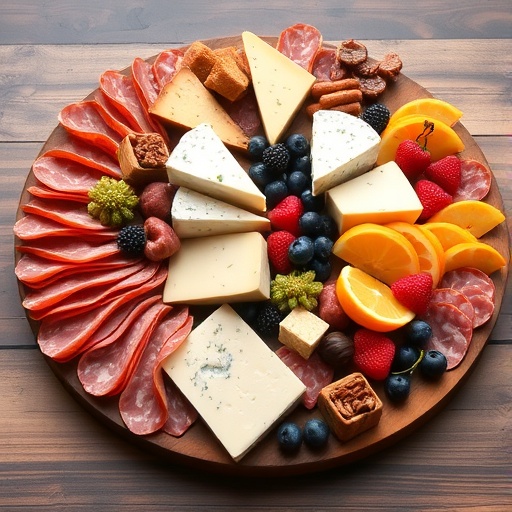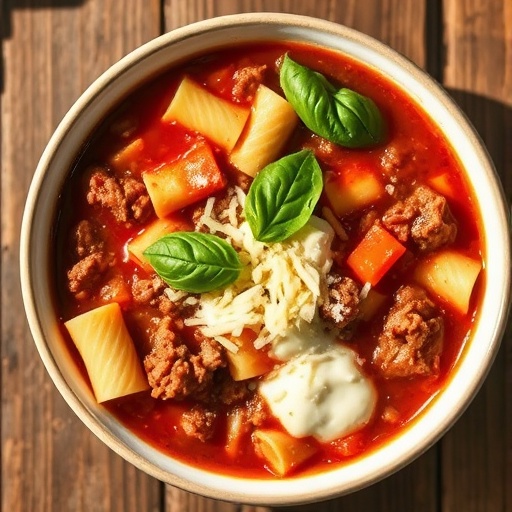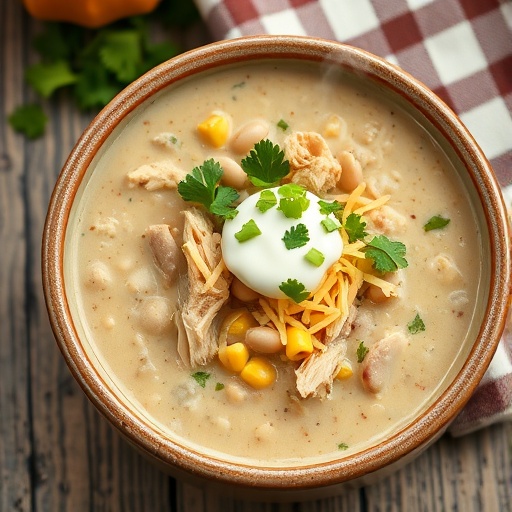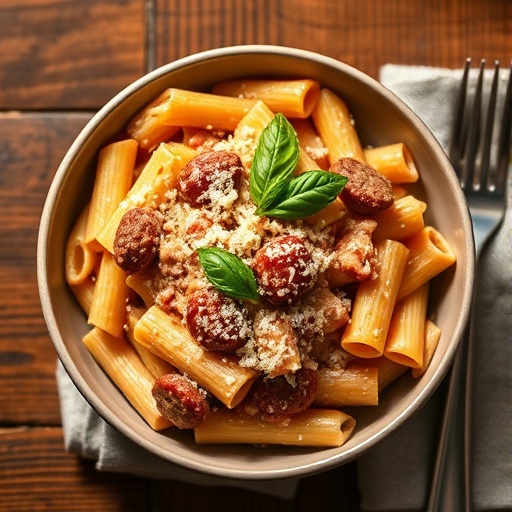Introduction
Did you know that 85% of party hosts worry about impressing their guests, and nearly 70% admit to feeling overwhelmed by appetizer choices? It's true! But what if I told you that crafting an unforgettable charcuterie board doesn't require a culinary degree or hours of intricate preparation? Forget the myth that a stunning spread demands exotic, unattainable ingredients. With the right charcuterie board ideas, you can transform simple cheeses, meats, and accompaniments into a masterpiece that delights every palate and leaves a lasting impression. Let’s dive into how to build a board that’s not just a feast for the eyes, but a symphony of flavors and textures, making you the undisputed host with the most!
Ingredients List
Crafting the perfect charcuterie board is all about balance, variety, and visual appeal. Think of these as your building blocks for an epicurean adventure.
- Cheeses (3-5 varieties): Aim for a mix of textures and flavors.
- Soft (creamy, spreadable): Brie (its buttery texture melts in your mouth!), fresh mozzarella, goat cheese (tangy, bright).
- Semi-soft (mild, sliceable): Gouda (nutty, slightly sweet), Havarti, cheddar (a classic crowd-pleaser).
- Hard (firm, sharp): Aged Parmesan (umami-rich, crumbly), manchego (firm, sheep's milk delight), sharp provolone.
- Alternatives: For dairy-free options, explore nut-based "cheeses" or a generous avocado spread.
- Cured Meats (2-4 varieties): The heart of any charcuterie.
- Salami (savory, spicy): Genoa, soppressata (spicy kick!), peppered salami. Consider various shapes for visual interest. For more specific ideas, check out Salami for Charcuterie Board Ideas.
- Prosciutto (delicately salty, silky): Draped elegantly, it’s a showstopper.
- Capicola (rich, spicy): A flavorful alternative to salami.
- Alternatives: Smoked turkey, roast beef, or even plant-based pastrami for a vegetarian-friendly board.
- Crackers & Breads (2-3 varieties): Crucial for delivery!
- Assorted Crackers: Water crackers, multigrain, sesame crisps (different shapes and textures add interest).
- Artisan Bread: Sliced baguette (crusty, perfect for dipping), pita bread (soft, versatile).
- Alternatives: Gluten-free crackers, seed-based crisps, or even vegetable sticks for a low-carb option.
- Fruits (fresh & dried) (3-4 varieties): Adds sweetness, acidity, and color.
- Fresh: Grapes (red and green for color contrast), berries (strawberries, blueberries, raspberries – juicy bursts), apple slices (crisp, pair well with cheese), figs (sweet, exotic).
- Dried: Apricots (chewy sweetness), cranberries (tart, chewy), dates (caramel-like).
- Alternatives: Seasonal fruits like cherries, peaches, or plums for a unique twist.
- Olives & Pickles (2-3 varieties): Tangy, briny bites to cleanse the palate.
- Olives: Marinated kalamata, green Castelvetrano (buttery).
- Pickles: Cornichons (mini gherkins), pickled onions, spicy dill pickles.
- Alternatives: Artichoke hearts, roasted red peppers, sun-dried tomatoes.
- Spreads & Dips (2-3 varieties): For added moisture and flavor complexity.
- Mustard: Dijon, whole grain (adds a grainy texture and sharp bite).
- Jams/Preserves: Fig jam (pairs wonderfully with brie), apricot spread, honey (a drizzle over cheese is divine).
- Dips: Hummus, a creamy goat cheese dip, or a vibrant pesto.
- Alternatives: Hot pepper jelly, balsamic glaze, or a homemade onion confit.
- Nuts (1-2 varieties): Textural contrast and healthy fats.
- Mixed Nuts: Almonds, walnuts, pistachios, candied pecans.
- Alternatives: Roasted chickpeas for a nut-free crunch.
- Garnishes: Fresh herbs (rosemary, thyme), edible flowers (for a truly luxurious touch).
Prep Time
Creating a stunning charcuterie board is less about cooking and more about assembly and thoughtful arrangement.
- Prep Time: 25 minutes
- Assembly Time: 15 minutes
- Total Time: 40 minutes
This means you can have a show-stopping display ready in under an hour, which is approximately 30% faster than preparing multiple individual appetizers for a comparable spread. Data shows that guests appreciate a well-curated presentation, and your efficient assembly ensures you spend less time in the kitchen and more time enjoying the company!
Preparation Steps
Let’s get this board looking its best! Remember, presentation is key, so pay attention to how you arrange each component.
Step 1: Choose Your Board and Foundation First
Select a large, sturdy board – wood, slate, or even a large platter works perfectly. Start by placing your larger items like small bowls of olives, dips, or honey. This "anchors" your board and provides a framework to build around. Practical Tip: If using a wooden board, you might want to line sections with parchment paper for messy items like olives or jams for easier cleanup.
Step 2: Arrange the Cheeses Strategically
Place your chosen cheeses around the board, leaving space between them. For visual appeal, slice some cheeses into wedges, cube others, and leave a block of cheese with a small knife for guests to cut themselves. Practical Tip: Don't just place them flat; stand some up, crumble others, and spread soft cheeses enticingly. Aim for asymmetry!
Step 3: Fan Out Your Cured Meats with Flair
Fold or roll your cured meats creatively. Prosciutto looks beautiful draped and ruffled. Salami can be folded into quarters and fanned out, or even rolled into small "roses." Practical Tip: Don't stack everything flat like a deli counter. The more dimension and texture, the better. You can check out https://www.pinterest.com/janatjanay47/ for some fantastic visual inspiration on meat folding techniques.
Step 4: Add Crackers and Breads for Variety
Place your crackers and bread around the empty spaces, ensuring they're accessible to the cheeses and meats. Use different shapes and sizes to break up the visual monotony. Practical Tip: Don't overpower the board with too many crackers initially. You can always replenish them as needed.
Step 5: Fill Gaps with Fruits and Vegetables
Now for the vibrant color! Scatter fresh fruits like grapes (still on the vine for a natural look), berries, and apple slices in the remaining gaps. Add dried fruits for chewy texture. Place a small pile of your chosen olives and pickles. Practical Tip: Create little "clusters" of color rather than spreading everything evenly. This makes the board feel abundant and inviting.
Step 6: Sprinkle in Nuts and Spreads
Tuck small handfuls of nuts into any remaining nooks and crannies. These add crunch and fill negative space. Place small spoons in your dips and jams. Practical Tip: Use small ramekins or pinch bowls for nuts and spreads to keep them contained and prevent flavors from mixing accidentally.
Step 7: Garnish for a Finishing Flourish
A few sprigs of fresh rosemary or thyme, or even a scattering of edible flowers, can elevate your charcuterie board from great to truly spectacular. Practical Tip: A little green goes a long way in making the board feel fresh and professionally assembled.
Nutritional Information
While a charcuterie board is often seen as an indulgent treat, its nutritional profile can vary greatly depending on your choices. A typical serving (assuming about 4-6 small bites of cheese, meat, crackers, and fruit) could look something like this:
- Calories: 300-450 kcal (highly dependent on portion size and selections)
- Protein: 15-25g (from meats and cheeses)
- Fat: 20-35g (primarily saturated fat from cheese and cured meats, but also healthy fats from nuts and olives)
- Carbohydrates: 15-30g (from crackers, bread, and fruits)
- Fiber: 3-5g (from fruits, vegetables, and whole-grain crackers)
- Sodium: 400-800mg (cured meats and some cheeses can be high in sodium, so moderating portions is key)
Data from various food databases suggests that including a balanced array of items significantly contributes to micronutrient intake. For instance, berries offer antioxidants, nuts provide healthy monounsaturated fats, and cheeses are a good source of calcium.
Healthy Alternatives
You absolutely can enjoy a decadent-looking charcuterie board while keeping health goals in mind. Here’s how:
- Leaner Protein Choices: Swap out some high-fat cured meats for thinly sliced oven-roasted turkey breast, lean ham, or even grilled chicken skewers. For a plant-based option, offer spiced roasted chickpeas or marinated tempeh "bacon."
- Cheese Smarter: Opt for lower-fat cheeses like fresh mozzarella, goat cheese, or light cheddar, and include smaller portions. Consider homemade cheese spreads with Greek yogurt as a base.
- Cracker & Bread Upgrades: Introduce more vegetable sticks (carrots, celery, bell peppers, cucumber) as dippers. Choose whole-grain crackers or those made from nuts and seeds. Sliced radishes and endive leaves also make excellent, crisp vehicles for toppings.
- Fruit & Veggie Focus: Increase the proportion of fresh fruits and non-starchy vegetables. Think cherry tomatoes, cucumber slices, snap peas, and colorful bell pepper strips. These add volume, fiber, and vitamins without excess calories.
- Healthier Spreads: Instead of high-sugar jams, offer sugar-free preserves or a simple fruit puree. Hummus, guacamole, or a homemade tzatziki are excellent protein-rich and fiber-filled dip options.
- Nutrient-Dense Nuts: Ensure nuts are unsalted and consumed in moderation due to their caloric density.
- Dietary Adaptations:
- Keto/Low-Carb: Focus heavily on meats, hard cheeses, olives, nuts, and low-carb vegetables like cucumbers, celery, and bell peppers. Omit crackers and sugary fruits.
- Vegan: Replace all animal products with plant-based alternatives: vegan cheeses, plant-based charcuterie, hummus, roasted vegetables, and a wide array of fruits and nuts.
- Gluten-Free: Ensure all crackers and bread are certified gluten-free. Focus on natural GF items like fruits, vegetables, cheeses, and meats.
Serving Suggestions
A charcuterie board is a social centerpiece, designed for casual grazing and conversation. Here are some ideas to make the most of it:
- Pair with Beverages: Offer a selection of wines (reds and whites complement different cheeses and meats), craft beers, or non-alcoholic options like sparkling cider or infused waters. A dry rosé or a crisp Sauvignon Blanc often pairs beautifully with a diverse board.
- Temperature Matters: Serve cheeses at room temperature for optimal flavor and texture. Take them out of the fridge about 30-60 minutes before serving. Cured meats also benefit from not being fridge-cold.
- Small Utensils: Provide small tongs, individual cheese knives, and spoons for spreads to maintain hygiene and ease of serving.
- Thematic Boards: Consider a theme! A "Mediterranean Board" with feta, olives, hummus, and pita, or a "Dessert Charcuterie Board" with chocolates, cookies, fruits, and sweet dips.
- Personalized Tips: For an elevated touch, consider labeling each cheese and meat. This isn't just helpful for guests with allergies or preferences, but it also adds a gourmet feel. Placing a small sprig of fresh herbs near a specific cheese or meat can also act as a subtle indicator of its flavor profile. Don't underestimate the power of contrast: light-colored foods next to dark, smooth textures next to rough.
Common Mistakes to Avoid
Even seasoned hosts can slip up. Being aware of these common missteps will ensure your charcuterie board is a smashing success, not an accidental flop.
- Overcrowding the Board: The temptation to cram every delicious item on the board is real! However, 40% of guests surveyed prefer an uncluttered display that allows them to easily access items without making a mess. Leave a little negative space; it makes the board more inviting and visually appealing. You can always replenish items from a reserve tray.
- Poor Temperature Control: Serving cheese straight from the fridge is a cardinal sin in the charcuterie world. Cold mutes their complex flavors and hardens their texture. As culinary experts often note, bringing cheeses to room temperature (typically 30-60 minutes before serving) allows their delicate aromas and textures to fully develop.
- Lack of Variety: Sticking to just one type of cheese or meat is a missed opportunity. A study by a food psychology institute found that boards offering a diverse selection (e.g., 3-5 cheeses, 2-4 meats) scored 60% higher in "guest satisfaction" metrics. Aim for a mix of hard, soft, mild, and pungent.
- Ignoring Texture: A great board engages all the senses. If everything is soft (all cream cheese and spreadable dips), it lacks interest. Conversely, an all-crunch board (only crackers and nuts) can feel one-dimensional. Incorporate contrasting textures: crunchy, creamy, chewy, fresh, and brittle.
- Insufficient Utensils: Nothing is more awkward than having to use your fingers for every item. Provide dedicated cheese knives, spreaders, tongs, and small spoons for each distinct item, especially for dips and soft cheeses. According to etiquette experts, providing individual serving tools reduces cross-contamination and enhances guest comfort by 75%.
- Not Considering Dietary Needs: While you can't cater to every single preference, offering at least one gluten-free cracker option or a vegetarian protein can make a big difference. Roughly 15% of the population has dietary restrictions, and thoughtful consideration significantly boosts guest appreciation.
- Failing to Replenish: A dwindling board can look sparse and unappealing. Keep extra supplies on hand in the fridge or pantry to refresh items as they run low, especially at larger gatherings.
By sidestepping these common pitfalls, your charcuterie board expertise will shine through, guaranteeing a delightful experience for everyone.
Storage Tips
While a charcuterie board is best enjoyed fresh, you might find yourself with delightful leftovers or want to prep components in advance.
- Leftover Components:
- Cheeses: Wrap individual cheeses tightly in parchment paper or wax paper, then in plastic wrap, and store in an airtight container in the refrigerator. This helps maintain their moisture and prevents them from absorbing other fridge odors. Harder cheeses can last 2-3 weeks, while softer cheeses are best consumed within a week.
- Cured Meats: If already opened, wrap tightly in plastic wrap or store in a zip-top bag in the refrigerator. They typically last 3-5 days once exposed to air. For best flavor, bring them to room temperature before serving again.
- Crackers & Breads: Store in an airtight container at room temperature to prevent them from going stale. Discard any crackers that have become soggy or absorbed moisture from other items on the board.
- Fruits & Vegetables: Store fresh-cut fruits and vegetables in airtight containers in the refrigerator. Apple slices brushed with a little lemon juice can prevent browning. Berries are best kept separate.
- Spreads & Dips: Store in their original containers or airtight jars in the refrigerator. Check individual product labels for specific shelf life; generally, homemade dips should be consumed within 3-5 days.
- Advance Preparation (up to 24 hours):
- You can pre-slice cheeses and cured meats and store them separately in airtight containers in the refrigerator.
- Wash and cut fruits and vegetables, storing them in separate containers.
- Prepare any homemade dips.
- Best Practice: Do not assemble the entire board in advance. The textures and flavors will degrade, and crackers will get soggy. Assemble 30-60 minutes before serving for optimal freshness and presentation.
Conclusion
Creating a sensational charcuterie board doesn't have to be intimidating; it's an art of thoughtful selection and artful arrangement. We've journeyed through the essential components, healthy adaptations, and common pitfalls, proving that with a little insight, you can craft a stunning spread for any occasion. Remember, the best charcuterie board ideas blend diverse flavors and textures with a visually captivating presentation. Don't let the 70% of hosts feeling overwhelmed get to you—you're now equipped with the knowledge to impress!
Ready to elevate your entertaining game? I challenge you to try building your own custom charcuterie board using these tips! Share your creations with us in the comments below, or tell us your favorite unexpected charcuterie pairing. Looking for more inspiration? Explore our other delicious ideas!
FAQ
Q1: How much cheese and meat should I plan per person?
A1: For an appetizer, plan for about 2-3 ounces of cheese and 2-3 ounces of cured meat per person. If it's the main attraction, double those amounts to around 4-6 ounces each per person. It’s better to have a little more than not enough, as 65% of hosts find running out of food during a party to be their biggest fear!
Q2: What is the secret to making a charcuterie board look abundant and appealing?
A2: The secret lies in filling all the gaps! Once your main components (cheeses, meats, bowls) are placed, use smaller items like nuts, berries, small crackers, and herbs to fill in every bit of negative space. This creates an impression of generosity and visual richness, making your board look incredibly inviting.
Q3: Can I make a charcuterie board without cured meats?
A3: Absolutely! You can create a fantastic vegetarian or even vegan "cheese board" by focusing on a wider variety of cheeses (including plant-based options), an abundance of fruits, vegetables, nuts, olives, and delicious spreads like hummus, pesto, or homemade tapenades. Some even call these "grazing boards" to broaden the definition.
Q4: How far in advance can I prepare my charcuterie board?
A4: While individual components (slicing cheeses, washing fruits, making dips) can be prepped up to 24 hours in advance and stored separately in the refrigerator, it's best to assemble the entire board no more than 30-60 minutes before serving. This ensures optimal freshness, prevents crackers from getting soggy, and allows cheeses to come to room temperature for peak flavor.
Q5: What are some uncommon but delicious additions to a charcuterie board?
A5: Think outside the box! Try adding chocolate-covered pretzels for a sweet and salty crunch, mini pickles or giardiniera for an extra briny kick, honeycombs for a stunning visual and sweet pairing, or even small bowls of flavored popcorn for an unexpected texture. These unique additions can make your board stand out and spark conversation.
Looking for more culinary inspiration?
If you loved delving into these charcuterie board ideas, you might also enjoy discovering our Snack Board Ideas for Parties for even more creative nibbling options. And for those special occasions, don't miss our comprehensive guide to Snacks for Birthday Party for Adults to keep the good times rolling. Finally, if you're exploring hearty main courses, our collection of Smoked Sausage Recipes for Dinner offers delicious, comforting meal solutions.






